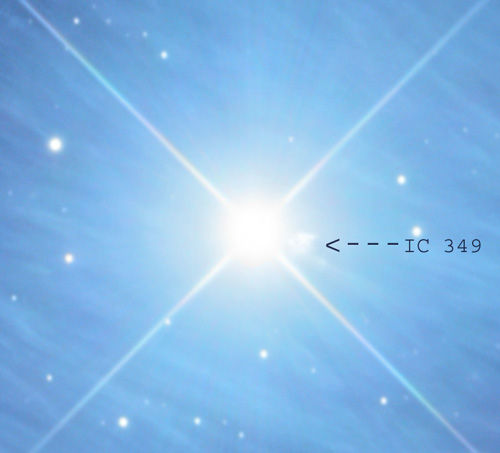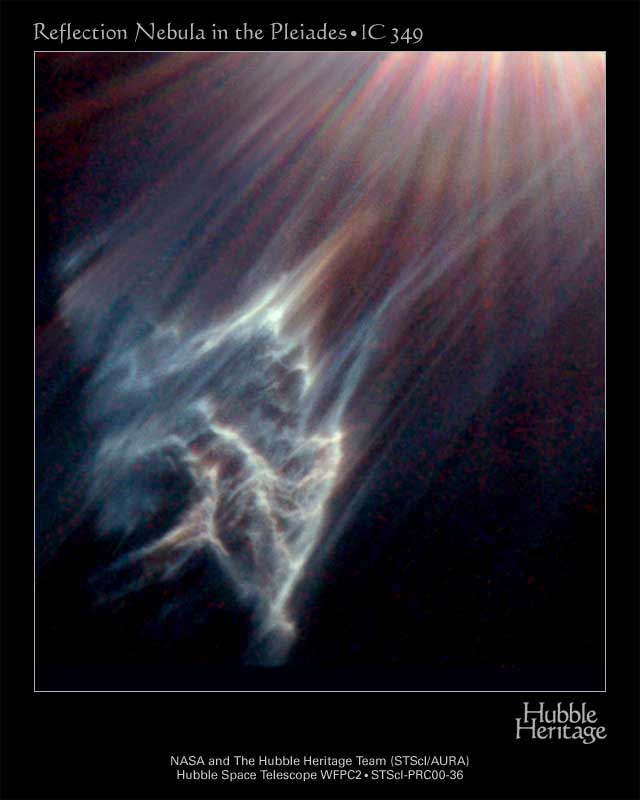 |
 |
IC 349 was first discovered by the American astronomer E. E. Barnard in 1890. Observing through the Lick Observatory 36-inch telescope he noticed a small intensely bright nebula immediately adjacent to the bright star Merope. The nebula now bears his name. IC349 is very bright due to its extreme proximity to Merope. It lies only 0.06 light-years from the star or 3,500 times the separation of the Earth from the Sun. The HST has taken a high resolution color image of IC 349 showing strange tendrils which appear to reach out towards the star. Astronomers believe that the tendrils are in fact made of larger particles which because of their greater mass tend to be repelled less by the stellar winds than the smaller particles which make up the bulk of the nebula.
 |
 |